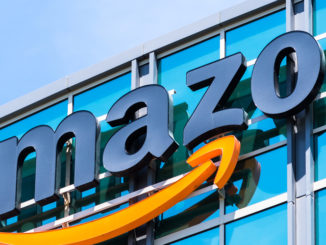
Without any of its own hardware and most of its software heavy-lifting dedicated to front-end development, security, and broader AWS systems integration, the cloud giant could own the quantum computing user base. The reasons are simple, even if the business could get complicated.
We often talk about future leadership in quantum computing by way of hardware innovation but if (or when) the technology suddenly takes off, the real differentiator will be accessibility and service. That might take an approach that is multi-platform with a defined pricing, support, and security model and while quantum startups can handle physics, building global front-end services is a different ballgame.
Amazon Web Services already knows how this story goes from its experiences building a multi-platform mega-platform for machine learning and expects the same lessons could carry forward for early quantum computing. The dual benefit for AWS with ML and now quantum is they can build a multi-tool foundation that is ready for an explosion of growth when it hits—one that is free from the vendor-specific negotiations of functionality, access, and pricing. And along the way, they get to evaluate every hardware and software vendor’s tooling, see inside each use case, and build their own profile of what the nascent quantum industry needs in advance.
There is a lot of learning but not much in the way of a viable business, according to the GM of AWS Braket service, Richard Moulds. Recall that Braket is AWS’s multi-layered quantum service, consisting of dedicated professional services teams to deep dive into specific applications, a research center oriented at Caltech, and Braket itself, which pulls together the hardware and software tools from a growing list of quantum computing vendors into a more cogent whole for easier access to and between quantum platforms and services.
“At the moment, we don’t see [quantum] as a business,” Moulds tells The Next Platform. “These machines cannot outpace classical systems today. There isn’t a commercial proposition for using these devices.” He says that what is definitely happening is fierce evaluation from both the makers of quantum devices and software but also companies trying to understand what they might need in a few years and who to hire to make it work.
“Right now, everyone is preparing for the future, seeing what it might look like. For us, we’re seeing what the value is, the pricing model and dimensions, what capacity and security implications there might be, and how people will think about accessing algorithms and if that is through a marketplace. We’re fleshing out the dimensions of the commercial model, not fighting for market share yet as an industry.”
While AWS is preparing for this future, they are learning how to provide the kind of platform that will make truly accessible quantum computing possible. They’re building something that can work with the best in breed hardware and quantum approach (annealing, gate, trapped ion, etc) for various use cases and let users experiment with those relatively seamlessly. And all the while they’re learning what will be the most successful when the technology takes off—and be ready for the growth at its initial point while the standalone quantum makers struggle to build robust, secure front ends, support, and services, often on startup capital.
At this stage, every quantum hardware maker has its own system, software stack, pricing, access policies, and limited experts for handling specific algorithms. More important, that growing handful of quantum systems vendors will be tasked with building sophisticated front ends that have all the security users will demand. Seems like a tall order, one the early quantum startups like D-Wave and Rigetti had to manage because there was no Braket-like service at the time.
The challenges are clear for quantum systems makers, but for users, they’re even more pressing. “We’ve heard from customers and software partners that all of this hard to navigate, all this wrestling with multiple services, different commercial models, different tooling. If they want to switch between annealers to gate, for instance, it’s all inconsistent. The message we got was we needed to deliver a consistent multi-technology platform around quantum computing that gets around all this jumping. We wanted to build a platform for quantum computing, not a showcase for a particular technology,” Moulds explains.
The goal is to build a mainstream cloud experience, no matter if the world isn’t ready to launch into quantum. This will let users and AWS see what it means to have such a service sitting alongside classical compute resources, how it plays with storage systems, and how it might interface with other data science services, not to mention looking at what new access and security controls need to be envisioned.
Moulds points to the many operational hassles of running a global commercial service that many smaller quantum startups with standout hardware will have trouble managing alone. “I think you’ll see a shift, the landscape is moving from a set of fragmented quantum services to a world where there are a set of platform services that the hardware providers gravitate toward.”
That movement has already begun with quantum hardware makers, some of whom had to go it alone in the early days, including Rigetti and D-Wave. AWS also has IonQ devices as part of Braket. In short, this represents the three main approaches to quantum (gate, gate-based ion traps, and annealing), which means the cloud giant can explore the strengths and weaknesses of all three in the context of real-world applications their employees at the Caltech center help create. This kind of deep competitive understand can also come in handy if and when quantum computing blows up enough for AWS to truly leverage the Braket service at meaningful scale.
“The moment quantum computing does something interesting in a provable fashion there will be a landslide of demand. Whatever industry that happens in first, everyone will want to take advantage of that technology and suddenly, the industry will be in a position where it will need to scale rapidly and have some of the basics in place that exist for other industries. This includes a commercial model, support, a functioning ecosystem, and tooling for users without a PhD in physics. We’re trying to get ahead of the curve as a platform and be ready to absorb demand.”
While AWS is working to standardize as much as they can, the devices themselves have too much variation to be fit nicely into instance-style boxes at this point. There is separate pricing by the minute for their managed simulator, D-Wave, Rigetti, and IonQ as well as per-task and per-shot. This gets a little tricky depending on the algorithm and while it sounds cheap from the outset (three cents for a per-task run on the D-Wave 2000Q) what that gets you in terms of results is experiment/tire-kicking level. Then again, perhaps that’s all the industry needs now.
So far, Amazon Braket provides integrations with Amazon CloudWatch, Amazon EventBridge, AWS Identity and Access Management (IAM), and AWS CloudTrail for monitoring, event-based processing, user access management, and logs. S3 is the expected storage backed for results. AWS has its own Braket SDK but open source Penny lane is also available for hybrid algorithm development with the ability to tap into TensorFlow and PyTorch.
In short, the tooling and pricing are still evolving but if this continues to play out, and if AWS can capture the emerging quantum hardware makers, they’ve provided a platform to let early users “easily” test the different hardware platforms and switch more easily between them, something that is not possible today with relatively steep vendor-specific learning curves. IBM has its own cloud and is likely to go it alone but there are a host of quantum startups on the horizon—let’s see how they decide to interface with the world.





Thanks for the update on AWS… but I’m missed more details on the competition and also on how this ‘common’ platform will work… For instance, IBM presented quantum software (qiskit etc…) and hardware roadmaps (that provides confidence on the platform) and they provide access to quantum services for FREE. How is AWS going to compete with that? Yeah, AWS can be used as the access proxy for the IBM quantum services and others quantum providers but the benefit margin will go to hardware/platform makers.
If the assumptions in the article were generally applicable, then Tesla would be selling their cars on Amazon. And the reason why they don’t (or don’t *need* to) will be pretty similar to the reason why neither IBM nor Google need to sell Quantum computing access through AWS: There is no oversupply.
IMHO market platforms like Amazon are designed for mass products offered by many competing manufacturers. Idem for AWS reselling software services. I don’t see Quantum computers becoming mass products very soon, just as it didn’t happen for battery-powered cars, which are much less complex.